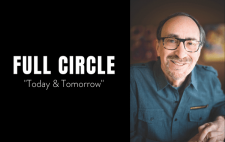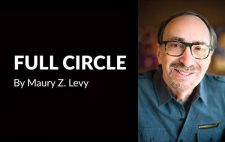So what if Arnold Fegenbaum had kissed a girl. For three months out of every year, I was the most popular boy in the third grade. I wasn’t the best looking, I wasn’t the most athletic. But I, like every superhero before me, had a secret power. I could compute batting averages in my head.
It all started at Connie Mack Stadium. My father taught me how to keep score. Whenever we went to a Phillies game, we never bought cotton candy. That was for sissies. We bought a scorecard/lineup, the ones that came with those tiny yellow pencils.
My father considered keeping score in baseball to be a science. And there was only one way to do it. His way.
“Now, listen closely,” he said. “You might want to take some notes here. A fly ball is an F with a circle around it. A ground ball is a G with a circle around it. Are you with me?”
I know I only got a B in social studies, but I wasn’t stupid. “I get it,” I said. “So a strikeout would be an S with a circle around it.”
“No, no, no,” he said. “A strikeout is a K.”
“Why a K?”
“It just is. It’s been that way since I was a kid.”
“That doesn’t make any sense,” I told him.
“This is baseball,” he said. “It doesn’t have to make any sense.”
“But why a K?” I asked.
My father grimaced. Then he shook his head and whipped around in his seat.
“Where the hell is that hot dog guy?” he said.
I didn’t always agree with it, but I kept doing it until I got it right. When we couldn’t afford to go to the game, I turned on my little transistor radio and logged every batter. At first, I would figure out batting averages by doing some basic division. The amount of hits divided by the amount of at bats.
One for four was .250. Two for seven was .286. Once word got around that I knew how to do this, every boy in school wanted to be my friend, at least during baseball season. I had become a batting average savant.
Kids asked me: “I’m three for seven, what’s my average?” Or, “I’m two for nine.” Now, that was a little harder. Remember, there were no computers in the ’50s. Computers – there weren’t even calculators. I did the math in my head, based on a great deal of research, research conducted with a hotdog in one hand and yellow mustard on my pants.
And, just like someone swinging for the fences, when we weren’t playing, I practiced. Boy, did I practice. On days when it rained, on days when I wasn’t building model hotrods, I had the kitchen table all to myself. Me and Cadaco’s All-Star Baseball.
It was a fascinating game. It used advanced metrics before anyone had coined the term. It was a batting simulation game, with a spinner and player disks that were divided into sections so a hitter had the probability of reproducing his real-life statistics.
It used the best real players. The guys you saw at the ballpark. Ennis, Ashburn. Roberts. And it threw in some all-time greats. Ruth, Gehrig, Fox.
Like any good fan at the ballpark, I chronicled every at-bat. I had a big, blue spiral notebook that I turned into a score sheet. I must have played 150 games that year.
When the season ended, I took my spiral notebook to show my father. “You did all this?” he said, with a bit of a twinkle in his eye.
“Yep,” I said. “Just look at game 43. Del Ennis had five RBIs.”
“Yes,” he said, “I see two homers and a double. But what’s this,” he said, “this S in a circle?”
“Oh, he struck out once,” he said.
My father just shook his head and got up from his chair. “I’m going to get a hot dog,” he said. That was his way of loving me.







